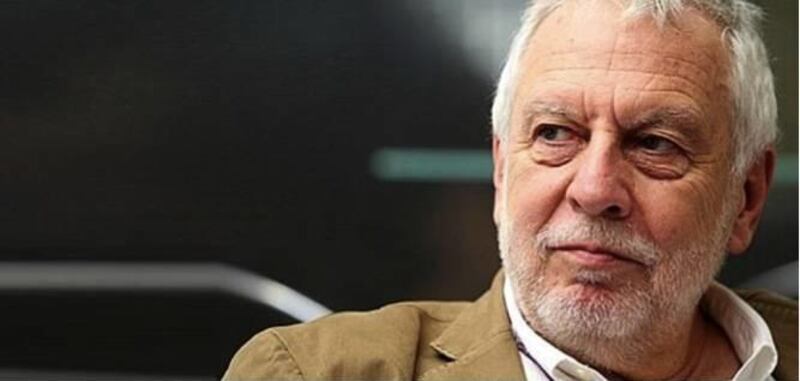This article originally appeared at Forbes.com.
Recognized as the founder of Pong, Atari, Chuck E. Cheese's and now an education company called BrainRush, Nolan Bushnell is obviously an innovator. But after reading his book "Finding the Next Steve Jobs," it became obvious to us that Bushnell’s ideas don’t stop in product development. He’s an innovator who understands how to find and manage other innovators (like Steve Jobs). We asked Bushnell how to get employees to offer their most creative efforts. Here are some of his own creative ideas.
David Sturt and Todd Nordstrom: Many people assume that creativity and innovation are reserved for specific industries, like video games or pizza parlors with large mechanical animals that sing. How important is creativity in not-so-creative work environments?
Nolan Bushnell: There is no such thing as a non-creative work environment. No matter what your job is, it’s your responsibility to find ways to improve the outcome — making it faster, better or more desirable.
Sturt and Nordstrom: What about the people who say, “My manager only wants me to follow the rules.”
Bushnell: I believe that people are typically more creative than their manager allows them to be. If companies want innovation, they need to find more places to remove the opportunity for a manager to say “No.”
Sturt and Nordstrom: That’s a scary concept to a lot of organizations.
Bushnell: It is. But, if we don’t trust our employees, why did we hire them? Many organizations and managers spend so much time focusing on process that it makes creativity and innovation almost impossible. We all need to shift our focus to results. Let people run at results … sooner or later the results will speak for themselves.
Sturt and Nordstrom: What’s your definition of process?
Bushnell: All businesses create ways and habits of doing things. We figure if it worked once, it will probably work again. But the danger is when we start to create recipes and assume that our results can’t be improved. Recipes are simply for people and companies who get lazy. Somehow a big portion of the world has made the manager believe that it’s his or her job to make sure everyone follows the recipe. Take this concept out of the office and into the classroom for a second. What if we could unburden a teacher from all the disciplinary responsibilities so he or she could focus on inspiring passion and curiosity in students? That sounds like the perfect classroom. Well, it’s what we should have in the office — because we’ve hired adults.
Sturt and Nordstrom: Okay, so basically, you’re saying that a company, team or culture that wants to inspire creativity and innovation needs to A) Focus on results and B) Reduce process and recipes. Is there anything else?
Bushnell: Yes, they need to give out Turkey awards. If you really want people to empty their pockets — with all their passion and ideas — then they have to know that judicious risks are rewarded and failure is allowed. There isn’t a business plan or strategy map that can predict every single variable. So, this is when you recognize people with a Turkey award.
Sturt and Nordstrom: Do you have an example of a Turkey award?
Bushnell: Mr. Munch trash cans at Chuck E. Cheese’s. We thought we could make cleaning up after yourself fun for kids by turning trash cans into entertainment. The cans had a slight vacuum that would suck dirty napkins into it. And, they had a place to return your pizza tin in exchange for a token so you could play another game. It seemed like a great idea. But it turned out to be a disaster. Families at Chuck E. Cheese’s would often order their pizza, eat some, go play games for a while and then come back and eat some more. At normal restaurants, when people leave their table, everyone assumes they are finished. So, other kids would be scooping up pizza tins to feed to Mr. Munch for a quarter, but that doesn’t mean the work shouldn’t be recognized. It was still great thinking. It deserved to be recognized.
Sturt and Nordstrom: One final question before we let you go. Steve Jobs worked for you at Atari. What was it about Steve that got your attention?
Bushnell: Steve was creative. But, more importantly, he was a guy who didn’t think about why things couldn’t be done — even if the hurdle was so big that it seemed impossible. Think about the iPod. Sure, Apple revolutionized the MP3 player. But, that’s not the most creative aspect of the story. Instead, it’s how Steve convinced the record labels to sell songs for 99 cents. It’s a total shift in thinking. You’ll find a ton of creative minds that have been misunderstood and rejected — both by the educational system and the workforce. Creative people are squashed because their thinking doesn’t always fit into the process. But, if you listen closely, they’ll feed you ideas of how something can be accomplished as opposed to why it can’t.
Innovation and creativity are often labels that people in organizations find intimidating. If you’re still wondering where you can start innovating, remember what Bushnell said, “There is no such thing as a non-creative work environment.” Give yourself and others permission to focus more on the result than the recipe and then reward the effort regardless of outcome. You might be surprised at what you discover.
David Sturt and Todd Nordstrom work with the O.C. Tanner Institute. Learn more about the New York Times best seller "Great Work: How to Make a Difference People Love" (McGraw-Hill) at www.greatwork.com.

